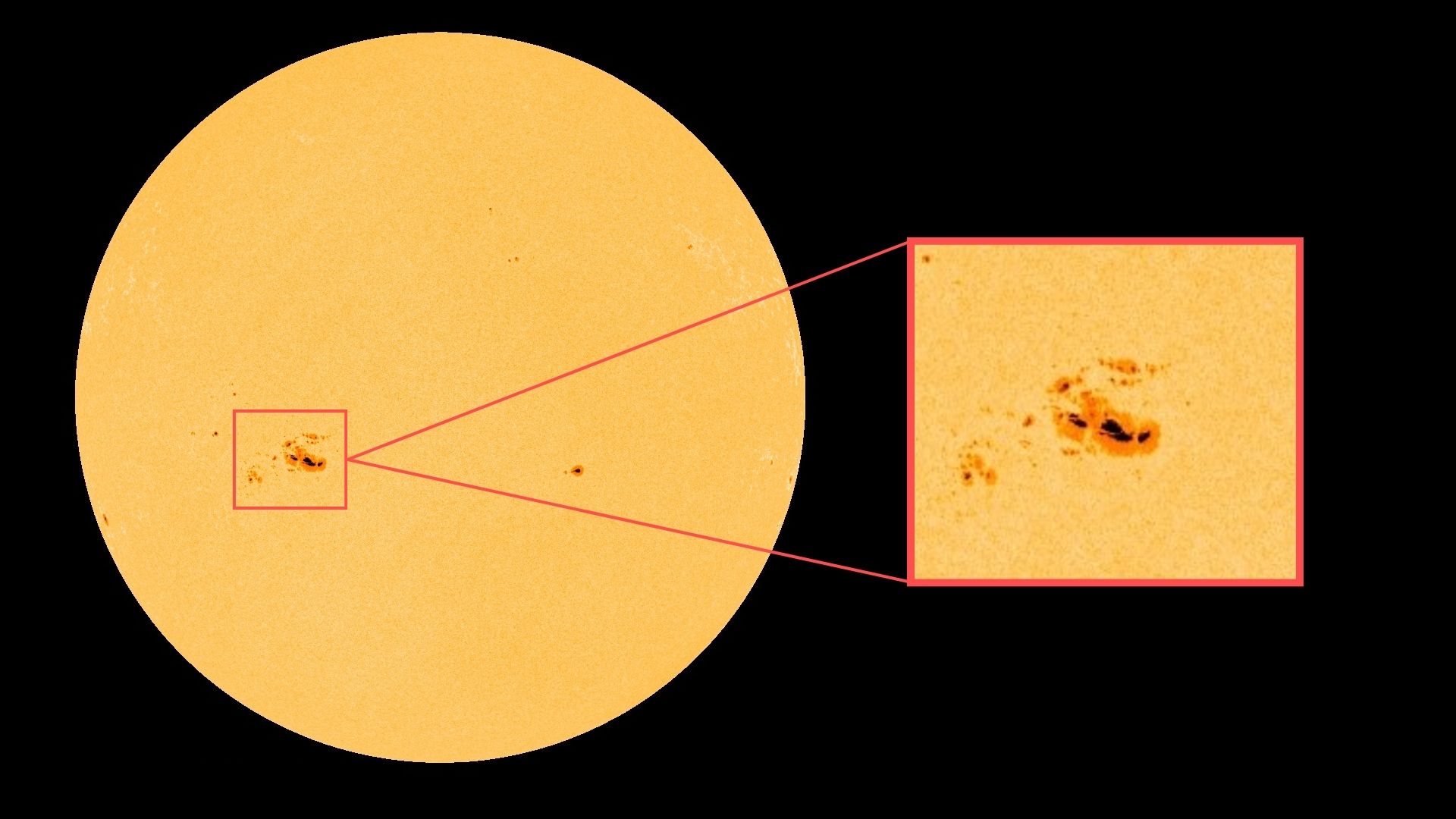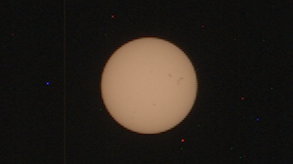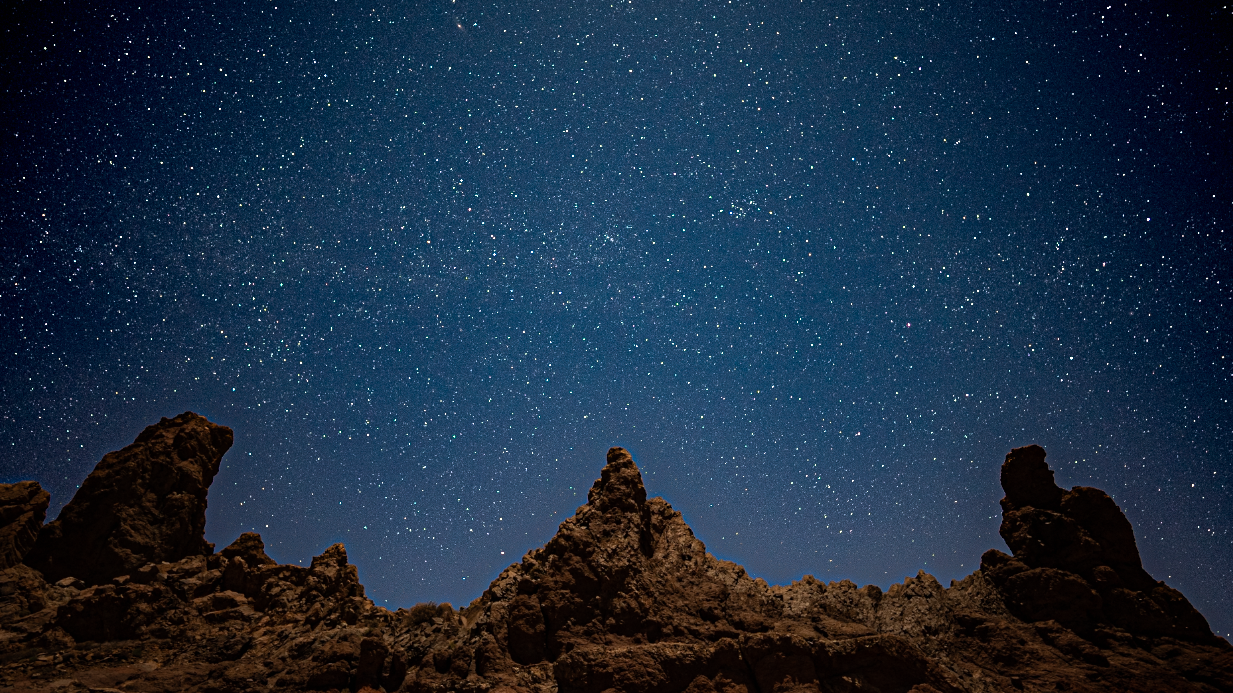'Martian' sunspot 15 times wider than Earth could soon bombard us with solar flares (photo & video)
The sunspot group is now facing Earth.

A sunspot so large it was seen from the surface of Mars is now facing Earth.
The gargantuan sunspot group AR3576 from end to end stretches for more than 124,274 miles (200,000 kilometers) and contains at least four dark cores each larger than Earth, according to Spaceweather.com. It was imaged by NASA's Perseverance Rover from the surface of Mars just last week.
The sunspot is so big it can be seen from Earth without the need for complex viewing equipment. Just don a pair of certified eclipse glasses and look up! For more information on how to safely view the sun check out our handy sun viewing guide.
Sunspots are dark, cooler regions on the surface of the sun that can spawn eruptive disturbances such as solar flares and coronal mass ejections (CMEs) — large releases of plasma and magnetic field from the sun.
The frequency and intensity of sunspots visible on the surface can be used to indicate the level of solar activity at any given time during the 11-year solar cycle that is driven by the sun's magnetic field. As we approach solar maximum — the highest rate of activity — sunspot regions such as AR3576 are becoming more frequent.
The magnetically complex sunspot is already crackling with M-class solar flares, and National Oceanic and Atmospheric Administration (NOAA) forecasts predict this sunspot could pose a threat for X-class solar flares — the most powerful type of solar flare.
Breaking space news, the latest updates on rocket launches, skywatching events and more!
Solar flares are triggered when magnetic energy builds up in the solar atmosphere and is released in an intense burst of electromagnetic radiation. They are categorized by size into lettered groups, with X-class being the most powerful. Then there are M-class flares that are 10 times smaller than X-class flares, then C-class, B-class and finally A-class flares which are too weak to significantly affect Earth. Within each class, numbers from 1 to 10 (and beyond, for X-class flares) denote a flare's relative strength.
Strong solar flares can also be accompanied by CMEs. When CMEs hit Earth they can disrupt our magnetosphere resulting in geomagnetic storms which in turn can create stunning aurora displays closer to equatorial regions than is usually possible during calm conditions.
Solar and space weather scientists are keeping a close eye on the sun as energetic solar flares and CMEs can be problematic for satellites in space and even electronic technology down on Earth.
Scientists at NOAA's Space Weather Prediction Center analyze sunspot regions daily to assess the threats. The World Data Center for the Sunspot Index and Long-term Solar Observations at the Royal Observatory of Belgium also tracks sunspots and records the highs and lows of the solar cycle to evaluate solar activity and improve space weather forecasting.
NASA also has a fleet of spacecraft — known collectively as the Heliophysics Systems Observatory (HSO) — designed to study the sun and its influence on the solar system, including the effects of space weather.

Daisy Dobrijevic joined Space.com in February 2022 having previously worked for our sister publication All About Space magazine as a staff writer. Before joining us, Daisy completed an editorial internship with the BBC Sky at Night Magazine and worked at the National Space Centre in Leicester, U.K., where she enjoyed communicating space science to the public. In 2021, Daisy completed a PhD in plant physiology and also holds a Master's in Environmental Science, she is currently based in Nottingham, U.K. Daisy is passionate about all things space, with a penchant for solar activity and space weather. She has a strong interest in astrotourism and loves nothing more than a good northern lights chase!


